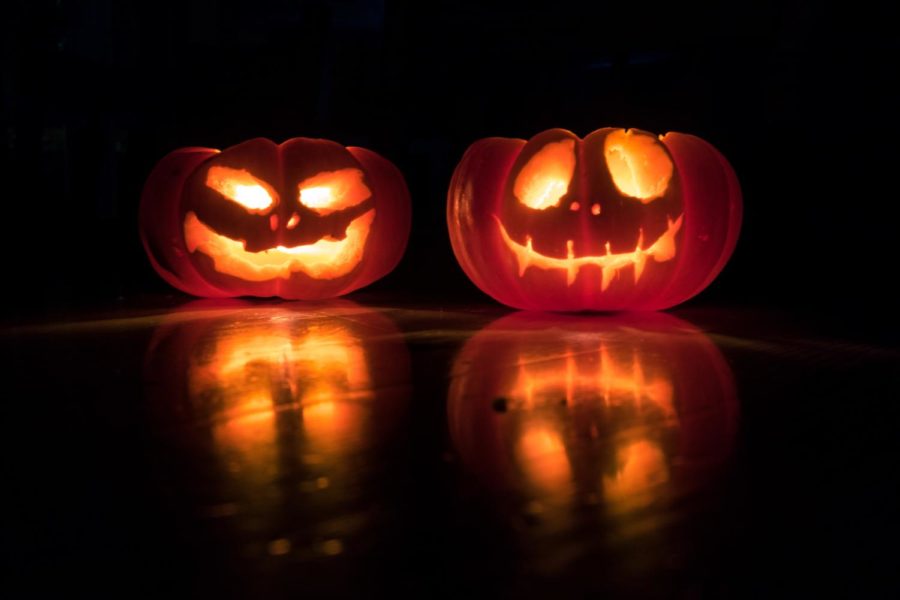Allow Me to Change Your Mind: Fading Fun for Halloween
The end of October is upon us and that can mean only none thing… the spookiest day of the year known as Halloween. The one day where it is okay to dress up as a spooky creature or a cultural icon, go to the houses in your neighborhood and give them a hearty “Trick or Treat” which usually results in getting so much candy you don’t know what to do with – or at least it used to be. As the years go, by the fun and novelty of this and many other traditions fade and Halloween becomes just another day to us. Let’s look back on where these traditions got their start.
The earliest origins of Halloween trace back to the ancient Celtic festival known as Samhain (pronounced Sow-in) which took place in what we now know as Ireland, the United Kingdom and Northern France. This day was celebrated on Oct. 31, marking the end of summer and the harvest season and the beginning of the dark and cold winter associated with human death.
During this time, the Celts believed the barrier between the world of the living and the dead was blurred and spirits could inhabit this realm on that day, making it easier for druids to predict the future, bringing comfort to them. To commemorate this event, they lit sacred bonfires burning crops and animals while wearing costumes containing animal heads and skins and attempted to tell fortunes to each other. Then, they extinguished the fires before re-lighting them later in the evening to help protect them from the oncoming winter.
When the Roman Empire took over the Celtic lands, this tradition merged with two Roman festivals. The first is Feralia, a day in late October when the Romans commemorated the passing of the dead and the second was to honor Pomona, the Roman goddess of fruits and trees whose symbol was an apple, which explains the modern Halloween tradition of bobbing for apples.
When Halloween arrived in America, it was only celebrated in Colonial New England at the time due to rigid Protestant belief systems. But, with the arrival of immigrants from Europe and especially the Irish because of the potato famine there, the modern Halloween started to take form nationally which includes trick-or-treating. In an attempt to shift Halloween to a more community and neighborly event in the 1920s and 30s, Halloween parties, popularized by the Baby Boom of the 1950s, were held and Halloween movies, consisting of horror franchises, became popular.
Allow me try to “Change Your Mind” about the matter.
When thinking about these traditions and all the fun stuff I do on Halloween night with my friends or family by my side, I get that feeling that nowadays we see the traditions as mostly kid stuff and not meant for older kids and adults. That thought saddens me as now I see this classic holiday as nothing but another ordinary day (It is a ridiculous and possibly creepy idea as an adult going to a stranger’s house and demanding candy.) One year when I lived in Ohio, we had to go trick-or-treating on the 30th of October because there were a lot of football games being played on the actual day and our dads wanted to watch them rather than supervise kids going trick-or-treating.
The idea of costumes saddens me since, even though adult-sized costumes are offered, many older kids and, especially parents, don’t dress up unless it’s with kids or as a family costume theme. Buying costumes that can potentially rip or tear before the big day arrives can be a detriment to the overall effect of the costumes.
The parties are the biggest reason to keep the tradition of Halloween into adulthood because, even if you are dressed up in a costume and don’t go trick-or-treating with the kids, you can still have a good time hanging out with other adults who are also dressed for the occasion. Most adults don’t want to go through the effort of setting up a themed party on that night, though, because of all the preparations and the cleanup afterward.
When it comes to Halloween, we adults should take this day to embrace our inner child and do something fun. So, I would like to offer a suggestion that is not held back by age and calls back to its Celtic roots, and that is a Halloween bonfire. With this tradition, you can hang out with friends by the fire – maybe tell scary stories or legends, even roast Halloween s’mores and play games before the sun sets. Then, maybe we can get back some form of that old Halloween magic from our younger days when the only thing that worried us was going back to school the Monday after the holiday.

